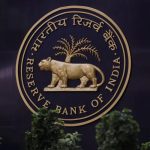Gold prices dropped to a one-month low near $3,277 at the end of June but quickly recovered
Gold has seen an incredible rise in 2025. Prices recently touched record highs above $3,450 per ounce, and even though they dipped slightly afterward, gold continues to trade near $3,278. Investors around the world are watching closely. Some see gold as a safe place to park money during uncertain times, while others wonder if the metal has become too popular—a crowded trade at risk of correction. Understanding what’s driving this rally and what risks lie ahead is essential.
Gold Prices Hold Steady After Pullback
Gold prices dropped to a one-month low near $3,277 at the end of June but quickly recovered. The drop came as global tensions, especially in the Middle East, started to ease. However, a weaker US dollar helped gold find support again. Analysts believe that gold has solid support at the $3,250 level. If the price stays above that, it could bounce back. But if it falls below, it may drop further, possibly toward $3,200.
Despite the recent pullback, gold remains in a strong position. Earlier this year, it climbed past $3,450 per ounce during a period of high geopolitical stress and rising inflation fears. Now, the market seems to be balancing between those who still see gold as a long-term investment and those who are taking profits after the big rally.
What’s Driving the Gold Rally?
Several big factors have pushed gold prices higher in recent months. One of the main reasons is strong demand from central banks around the world. In the first quarter of 2025, central banks bought nearly 290 tonnes of gold. Many expect total yearly purchases to hit 900 tonnes by the end of the year. These big buys help create strong demand and keep prices up.
Another key reason is inflation. Even though inflation has come down in some countries, it remains higher than many central banks would like. Low or negative real interest rates also make gold more attractive because it does not pay interest, but when rates are low, gold looks better compared to savings accounts or bonds.
Also, countries are trying to reduce their dependence on the US dollar. As a result, they are adding more gold to their reserves. This move to “de-dollarize” makes gold an important asset for national security and economic balance.
Is Gold Becoming a Crowded Trade?
While gold has many strong reasons for its rise, some signs suggest it may be getting crowded. A crowded trade happens when too many investors rush into the same asset, pushing its price too high and making it vulnerable to sudden drops. In June, gold dropped about 3% in one week, and it dipped below its 50-day moving average—a warning sign for traders who follow charts and technical signals.
Momentum indicators, such as the Relative Strength Index (RSI), also suggest that the upward speed of gold’s rally may be slowing. Some investors are now selling to lock in profits. Others believe that the worst of global tensions has passed, which reduces the need to hold gold as a safety asset.
Global stock markets have also started to rise again. Volatility in the market has dropped, and investor fear has decreased. When markets feel safer, investors often shift their money out of gold and into stocks or other assets that offer better returns.
What Experts Predict for the Coming Months
Financial experts have different opinions about where gold is headed. Some believe it could continue climbing, possibly reaching $3,700 or even $4,000 by early 2026. These predictions are based on strong central bank buying, inflation worries, and slowing global growth.
Other experts believe gold may not rise much further in the short term. They expect the price to stay between $3,100 and $3,300 for the rest of the year. These analysts think that gold’s biggest rally already happened earlier in the year when fears were at their peak.
A growing number of analysts believe that gold has entered a new phase. In the past, $2,000 was seen as a very high price for gold. Now, many believe that $3,000 has become the new base level. This shift reflects changes in global finance, where gold plays a more central role.
Still a Haven or Just Popular?
Gold has always been considered a safe-haven asset. Investors turn to it during wars, market crashes, or economic uncertainty. In 2025, it will still play that role. If new conflicts break out or inflation spikes again, many expect investors to return to gold quickly.
But the recent rally also includes a lot of short-term buyers. These investors jump in because they see gold prices going up, not because they believe in gold’s long-term value. When this happens, it can create a bubble, where prices rise too fast and fall just as quickly when people sell to take profits.
With global stock markets gaining strength and inflation slowing down, gold may start to lose some of its appeal, at least for those who bought it as a quick trade.
What Investors Should Watch Now
Over the next few months, four important factors will likely decide gold’s path. First, traders are watching technical price levels closely. If gold holds above $3,250, that would be a good sign. But if it breaks below, it could fall further.
Second, major economic events like US inflation reports and interest rate decisions will affect gold’s movement. If central banks cut rates, gold could benefit again. If rates rise, it could pressure prices.
Third, central banks will continue to play a big role. If they keep buying gold in large amounts, prices may stay strong even if private investors sell.
Fourth, investor behavior will also be key. If more people move their money back to stocks or real estate, gold could see outflows. But if economic troubles return, gold might see a fresh wave of buying.
A Time to Be Cautious but Not Bearish
Gold remains in a strong position. The long-term factors that support it—such as inflation, central bank demand, and global uncertainty—have not disappeared. The price level around $3,000 now seems to serve as a strong floor, giving gold a solid foundation.
However, the recent rally has attracted many short-term traders. Their fast entry and exit from the market can create sudden drops. Also, the easing of global tensions and improving economic data may reduce the demand for gold in the near term.
For investors, gold still makes sense as part of a balanced portfolio. But entering now requires care and patience. Watching global trends, inflation data, and central bank behavior will help determine whether gold’s bull run continues or takes a break.





